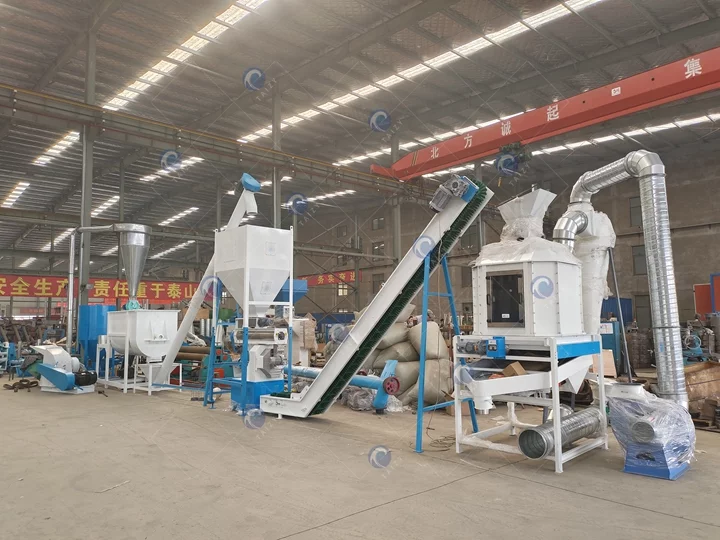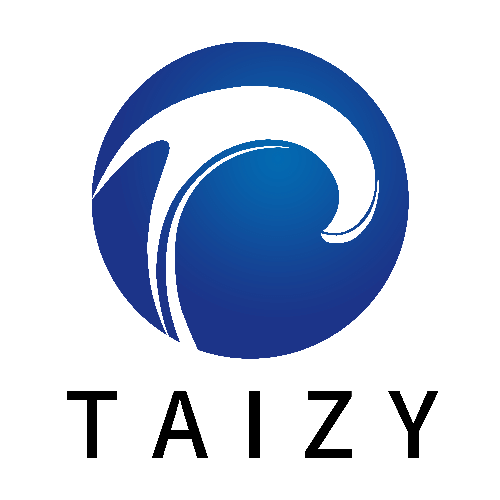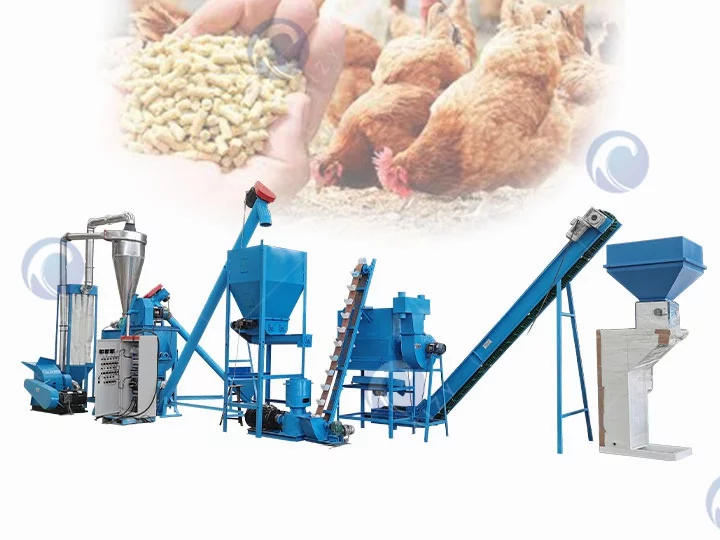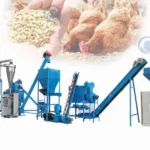สายการผลิตเม็ดอาหารสัตว์
ในขอบเขตที่พลวัตของเกษตรกรรมยุคใหม่ ซึ่งความแม่นยำและประสิทธิภาพเป็นสิ่งสำคัญยิ่ง สายการผลิตเม็ดอาหารสัตว์กลายเป็นรากฐานสำคัญของการจัดการปศุสัตว์ที่ยั่งยืน ระบบที่ซับซ้อนนี้แสดงถึงการบรรจบกันของเทคโนโลยีล้ำสมัยและความเชี่ยวชาญด้านการเกษตร โดยมีจุดมุ่งหมายเพื่อปฏิวัติวิธีการเลี้ยงปศุสัตว์ของเรา
ออกแบบมาเพื่อรองรับสัตว์หลากหลายสายพันธุ์ ตั้งแต่สัตว์ปีกและปศุสัตว์ไปจนถึงการเพาะเลี้ยงสัตว์น้ำ สายการผลิตเม็ดอาหารสัตว์จะเปลี่ยนวัตถุดิบให้เป็นเม็ดที่มีสารอาหารสมดุล กระบวนการที่ออกแบบอย่างประณีตทำให้มั่นใจได้ถึงความหนาแน่นของสารอาหารที่เหมาะสม ส่งเสริมการเจริญเติบโตที่ดี ปรับปรุงอัตราการเปลี่ยนอาหารสัตว์ และท้ายที่สุดคือช่วยเพิ่มความเป็นอยู่โดยรวมของสัตว์
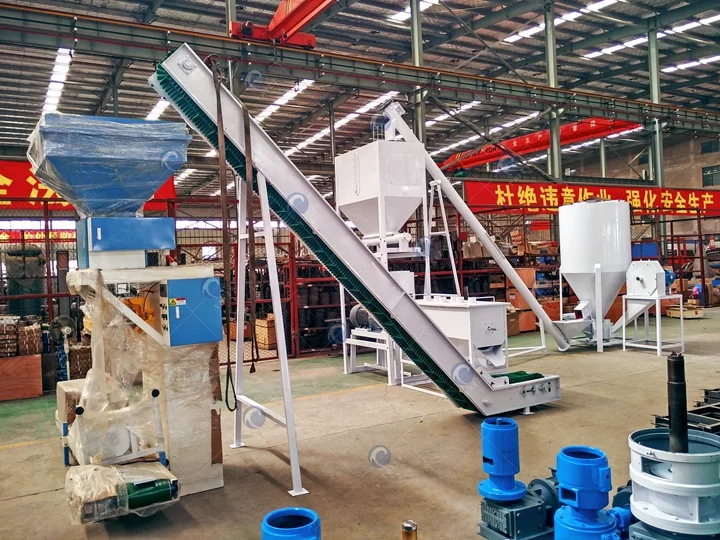
สายการผลิตเม็ดอาหารสัตว์คืออะไร?
สายการผลิตเม็ดอาหารสัตว์เป็นระบบเครื่องจักรที่ออกแบบมาเพื่อการผลิตเม็ดอาหารสัตว์ที่มีประสิทธิภาพและเป็นอัตโนมัติ เป็นการตั้งค่าที่ครอบคลุมซึ่งครอบคลุมขั้นตอนต่างๆ ที่เกี่ยวข้องกับการเปลี่ยนวัตถุดิบให้เป็นเม็ดที่มีสารอาหารสมดุลและย่อยง่าย เหมาะสำหรับการบริโภคของปศุสัตว์และสัตว์ปีกหลากหลายประเภท
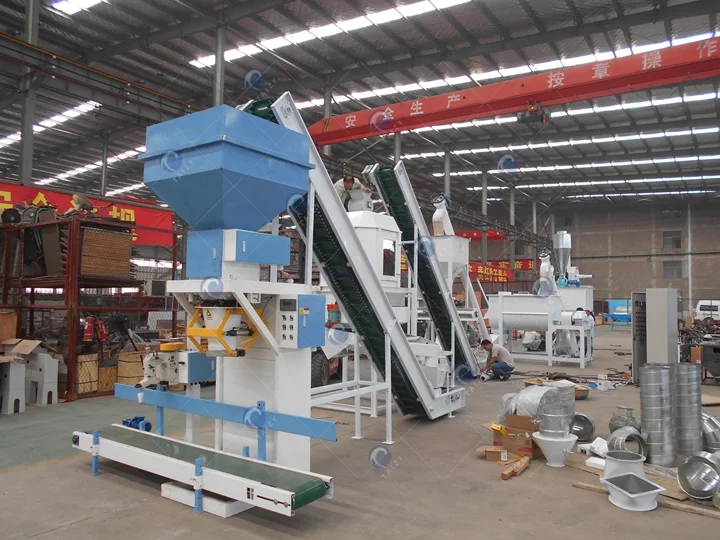
ส่วนประกอบหลักของสายการผลิตเม็ดอาหารสัตว์
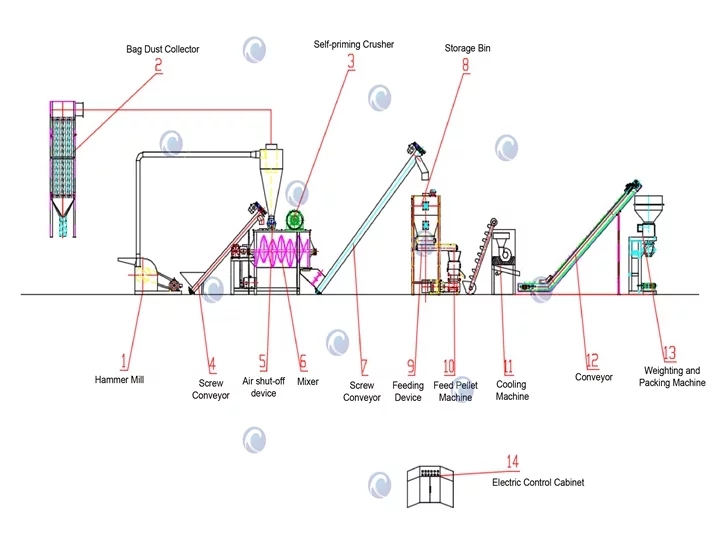
1. โรงสีค้อน
- การทำงาน: บดวัตถุดิบให้ได้ขนาดที่เหมาะสมสำหรับการแปรรูปต่อไป เช่น บดเมล็ดพืชและกากถั่วเหลืองให้เป็นอนุภาคขนาดเล็ก
- หลักการทำงาน: ใช้แรงกลในการบดและบดวัตถุดิบเพื่อให้ได้ขนาดอนุภาคที่ต้องการ
| ความจุ | ขนาด | น้ำหนัก | พลัง |
| 600-1300กก./ชม | 1850*1060*1240มม | 850กก | 22กิโลวัตต์ |
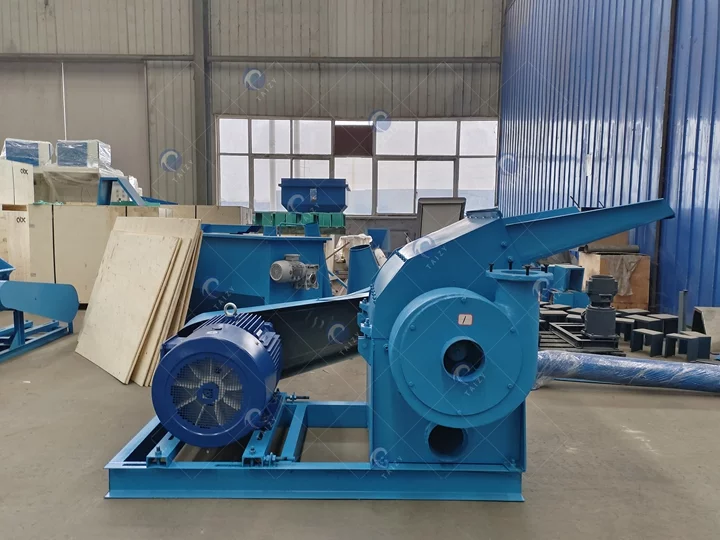
2. ถุงเก็บฝุ่น
- การทำงาน: ขจัดฝุ่นและสิ่งสกปรกเพื่อรักษาสภาพแวดล้อมการผลิตที่สะอาด มั่นใจในสุขภาพของผู้ปฏิบัติงาน
- หลักการทำงาน: ใช้ถุงกรองเพื่อดักจับอนุภาคจากการไหลของอากาศ ทำให้อากาศในสภาพแวดล้อมสะอาด
3. เครื่องบดแบบรองพื้นเอง
- การทำงาน: กลั่นกรองวัตถุดิบเพิ่มเติมเพื่อให้แน่ใจว่าเม็ดมีความสม่ำเสมอและสม่ำเสมอ ช่วยเพิ่มคุณภาพ
- หลักการทำงาน: ใช้แรงทางกลและกลไกการดูดเพื่อบดขยี้วัตถุดิบพร้อมทั้งแยกฝุ่นออกไปพร้อมกัน
4. สกรูลำเลียง
- การทำงาน: ขนส่งวัตถุดิบที่แปรรูปเข้าสู่สายการผลิต ทำให้สามารถป้อนวัสดุอัตโนมัติได้
- หลักการทำงาน: ใช้อุปกรณ์ทางกลในการยกและลำเลียงวัตถุดิบผ่านท่อลำเลียงไปยังหน่วยประมวลผลถัดไป
| ความจุ | พลัง | ขนาด | น้ำหนัก |
| 0-1,000กก | 1.5kw | 2800*850*740มม | 200กก |
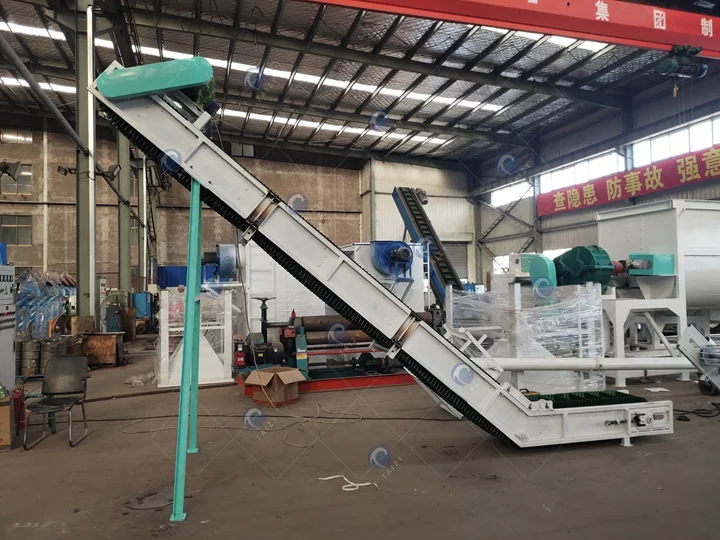
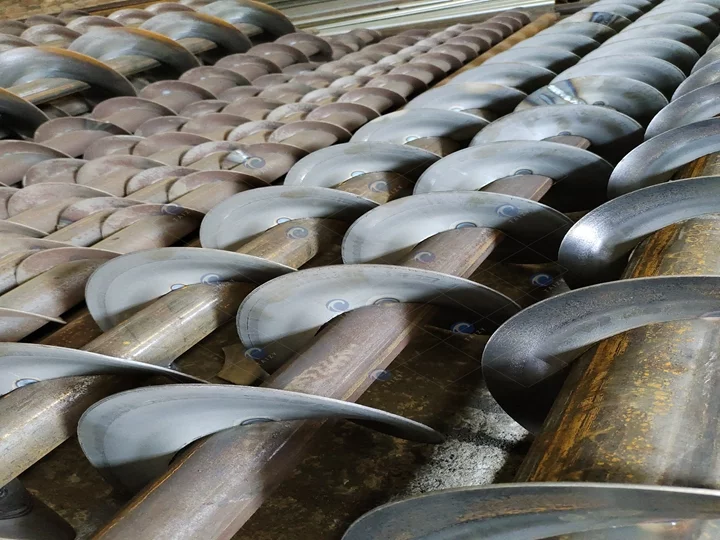
5.อุปกรณ์ปิดแอร์
- การทำงาน: ปรับการไหลเวียนของอากาศที่สร้างขึ้นเพื่อให้แน่ใจว่าวัสดุจะไหลได้อย่างราบรื่นภายในเครื่องบดและเพื่อควบคุมขนาดอนุภาค
- หลักการทำงาน: ควบคุมความเร็วและทิศทางการไหลของอากาศโดยการควบคุมการไหลเวียนของลมของพัดลม
6. มิกเซอร์
- การทำงาน: ผสมผสานวัตถุดิบประเภทต่างๆ เข้าด้วยกันเพื่อให้แน่ใจว่ามีโภชนาการที่สมดุลในอาหารเม็ด และปรับปรุงคุณภาพอาหารสัตว์
- หลักการทำงาน: ใช้อุปกรณ์ผสมเชิงกลเพื่อผสมวัตถุดิบประเภทต่างๆ อย่างละเอียด
| ความจุ | ขนาด | พลัง | น้ำหนัก |
| 0.5-1.2T | 2100*800*1550มม | 4กิโลวัตต์ | 210กก |
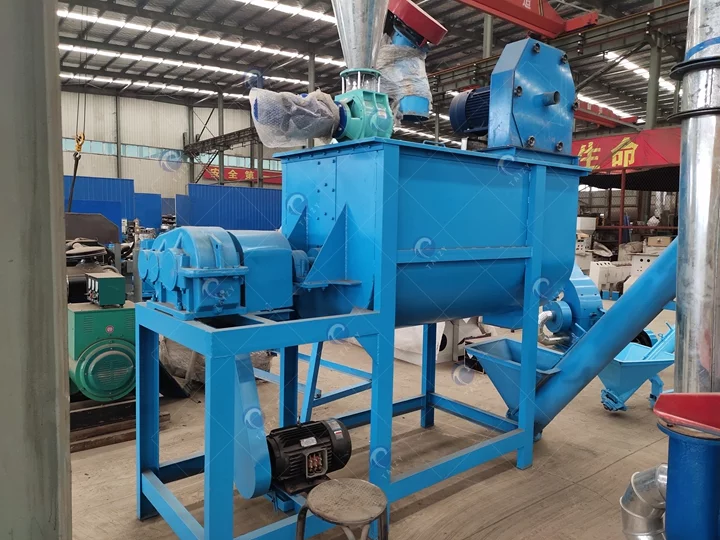
7. สกรูลำเลียง
Function: It feeds the mixed feed into the storage bin, enabling automated material feeding.
8. ถังเก็บของ
- การทำงาน: จัดเก็บฟีดผสมเพื่อให้มั่นใจว่าสายการผลิตทำงานอย่างต่อเนื่อง
- คุณสมบัติ: โดยทั่วไปจะมีขีดความสามารถที่แน่นอนในการตอบสนองความต้องการการผลิตในช่วงเวลาที่กำหนด
9. อุปกรณ์ให้อาหาร
Function: It transports the mixed feed powder to the pellet mill for pelletization.
10. เครื่องอัดเม็ดอาหารสัตว์
- การทำงาน: มันจะบีบอัดฟีดผสมผ่านแม่พิมพ์เพื่อสร้างเป็นเม็ดอัดแน่น ปรับปรุงเนื้อสัมผัสและความสามารถในการจัดเก็บ
- หลักการทำงาน: ใช้การตายและการบำบัดความร้อนเพื่อสร้างรูปร่างวัสดุผสมให้เป็นเม็ด
| ความจุ | ขนาด | พลัง | น้ำหนัก |
| 80-120กก./ชม | 800*350*670มม | 4กิโลวัตต์ | 95/110กก |
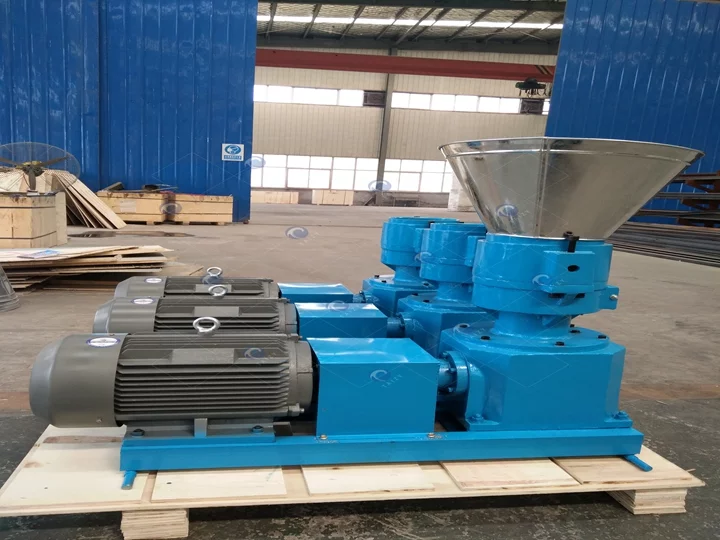
11. เครื่องทำความเย็น
- การทำงาน: ขจัดความชื้นส่วนเกินออกจากเม็ดที่เพิ่งอัดขึ้นรูปใหม่ เพื่อให้ได้ปริมาณความชื้นที่ต้องการ เพื่อความเสถียรและการเก็บรักษาที่ดีขึ้น
- หลักการทำงาน: ใช้ลมร้อนระเหยความชื้นออกจากเม็ดลดความชื้น
| ความจุ | ขนาด | พลัง | น้ำหนัก |
| 0-500กก./ชม | 1800*750*1100มม | 0.75+2.2กิโลวัตต์ | 220+65กก |
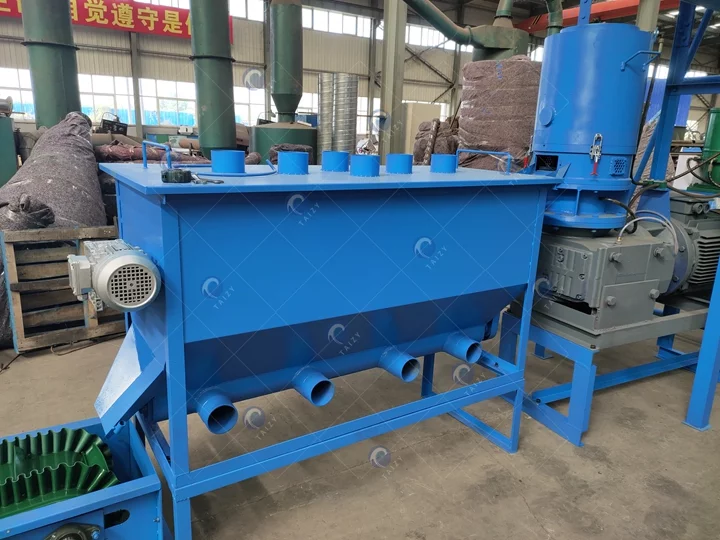
12. ถังลำเลียง
Function: It transports pellets to the next processing stage or directly to the packaging machine, enabling automated pellet transportation.
| ความจุ | พลัง | ขนาด | น้ำหนัก |
| 0-2000กก | 2.2kw | 5600*600*1500มม | 300กก |
13. เครื่องชั่งน้ำหนักและบรรจุหีบห่อ
Function: It packages the finished pellets for storage and transportation, maintaining product quality and hygiene.
| พลัง | ขนาด | น้ำหนัก |
| 1กิโลวัตต์ | 1200*1200*2400มม | 600กก |
เหตุใดจึงเลือกซื้อสายการผลิตเม็ดอาหารสัตว์
การเลือกลงทุนในสายการผลิตเม็ดอาหารสัตว์สามารถนำมาซึ่งผลประโยชน์มากมายสำหรับธุรกิจที่เกี่ยวข้องกับการเลี้ยงสัตว์และการเกษตร
- ปรับปรุงคุณภาพอาหารสัตว์: สายการผลิตเฉพาะทำให้มั่นใจได้ว่าเม็ดอาหารสัตว์มีความสม่ำเสมอและมีคุณภาพสูง สิ่งนี้สามารถนำไปสู่สุขภาพปศุสัตว์ที่ดีและมีประสิทธิผลมากขึ้น ส่งผลให้อัตราการเติบโตดีขึ้น การผลิตนมหรือไข่สูงขึ้น และประสิทธิภาพโดยรวมดีขึ้น
- การปรับแต่งและความยืดหยุ่น: สายการผลิตที่ได้รับการออกแบบมาอย่างดีทำให้สามารถปรับแต่งสูตรอาหารสัตว์ได้ ความยืดหยุ่นนี้ช่วยให้เกษตรกรสามารถปรับแต่งอาหารสัตว์ให้ตรงตามความต้องการทางโภชนาการเฉพาะของสัตว์ได้ ซึ่งเป็นสิ่งสำคัญสำหรับการเจริญเติบโตและประสิทธิภาพที่ดีที่สุด
- ความคุ้มทุน: การผลิตอาหารสัตว์เองภายในบริษัทมักจะมีความคุ้มค่าในระยะยาวมากกว่าเมื่อเปรียบเทียบกับการซื้ออาหารสัตว์สำเร็จรูป ช่วยลดการพึ่งพาซัพพลายเออร์ภายนอกและช่วยให้สามารถจัดซื้อวัตถุดิบจำนวนมาก ซึ่งอาจช่วยลดต้นทุนโดยรวมได้
- ลดการสูญเสียอาหารสัตว์: ด้วยการผลิตอาหารสัตว์ที่ไซต์งาน คุณสามารถควบคุมปริมาณและคุณภาพของอาหารสัตว์ที่ผลิตได้ และลดของเสียให้เหลือน้อยที่สุด สิ่งนี้สามารถนำไปสู่การประหยัดต้นทุนและการดำเนินงานที่ยั่งยืนมากขึ้น
- มาตรฐานด้านสุขอนามัยและความปลอดภัย: สายการผลิตเฉพาะปฏิบัติตามมาตรฐานด้านสุขอนามัยและความปลอดภัยที่เข้มงวด เพื่อให้มั่นใจว่าอาหารสัตว์ปราศจากสิ่งปนเปื้อนหรือสิ่งเจือปนที่อาจส่งผลเสียต่อสุขภาพของสัตว์
- ความสามารถในการตรวจสอบย้อนกลับและการควบคุมคุณภาพ: ด้วยสายการผลิตของคุณเอง คุณสามารถควบคุมการจัดหาและคุณภาพของวัตถุดิบได้อย่างสมบูรณ์ ช่วยให้สามารถตรวจสอบย้อนกลับและควบคุมคุณภาพได้ดีขึ้นตลอดกระบวนการผลิต
- การปรับตัวให้เข้ากับความต้องการเฉพาะของสัตว์: สัตว์แต่ละชนิดและช่วงชีวิตของสัตว์มีความต้องการอาหารที่เฉพาะเจาะจง สายการผลิตเฉพาะช่วยให้ปรับเปลี่ยนสูตรได้ง่ายเพื่อรองรับสัตว์สายพันธุ์ต่างๆ และความต้องการทางโภชนาการเฉพาะของพวกมัน
- ลดการพึ่งพาซัพพลายเออร์ภายนอกให้เหลือน้อยที่สุด: การเป็นเจ้าของสายการผลิตช่วยลดการพึ่งพาซัพพลายเออร์ภายนอกสำหรับอาหารสัตว์ สิ่งนี้อาจเป็นประโยชน์อย่างยิ่งในช่วงเวลาที่ห่วงโซ่อุปทานหยุดชะงักหรือความผันผวนของราคาอาหารสัตว์
- โอกาสทางการตลาด: ด้วยความสามารถในการผลิตอาหารสัตว์อาจมีโอกาสเข้าสู่ตลาดการผลิตอาหารสัตว์ จัดหาฟาร์ม หรือธุรกิจใกล้เคียง สิ่งนี้สามารถกระจายแหล่งรายได้และสร้างรายได้เพิ่มเติม
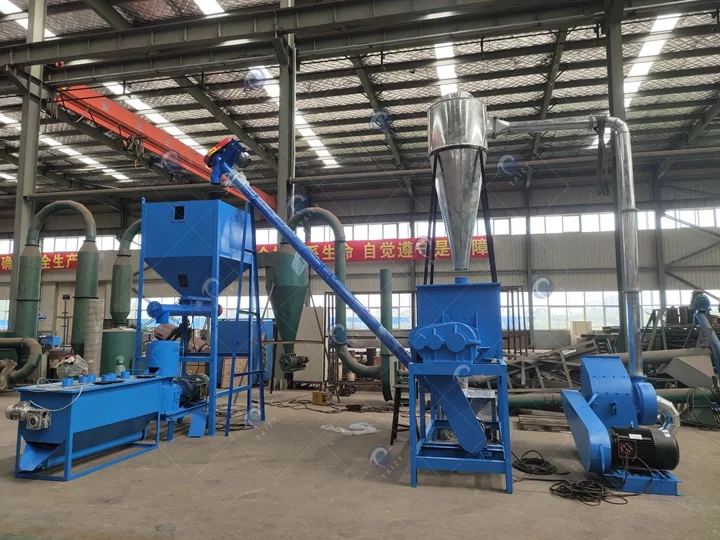
ท้ายที่สุดแล้ว การลงทุนในสายการผลิตเม็ดอาหารสัตว์ช่วยให้เกษตรกรสามารถควบคุม มีความยืดหยุ่น และรับประกันคุณภาพในกระบวนการผลิตอาหารสัตว์ได้มากขึ้น ซึ่งนำไปสู่การดำเนินงานด้านปศุสัตว์ที่ดีต่อสุขภาพและมีประสิทธิผลมากขึ้น นอกจากนี้ยังช่วยประหยัดต้นทุนและโอกาสในการขยายธุรกิจอีกด้วย
คำถามที่พบบ่อยเกี่ยวกับสายการผลิตเม็ดอาหารสัตว์
สัตว์ประเภทใดบ้างที่สามารถได้รับประโยชน์จากอาหารเม็ดที่ผลิตโดยสายการผลิตนี้?
เม็ดอาหารสัตว์ที่ผลิตโดยสายการผลิตนี้เหมาะสำหรับสัตว์หลากหลายประเภท รวมถึงสัตว์ปีก (เช่น ไก่ เป็ด และไก่งวง) ปศุสัตว์ (เช่น วัว หมู และแกะ) รวมถึงปลาในการเพาะเลี้ยงสัตว์น้ำ
สายการผลิตมั่นใจในคุณภาพอาหารสัตว์ได้อย่างไร?
สายการผลิตใช้กระบวนการที่แม่นยำและมาตรการควบคุมคุณภาพในแต่ละขั้นตอน เพื่อให้แน่ใจว่าอาหารเม็ดตรงตามข้อกำหนดทางโภชนาการและปราศจากสิ่งปนเปื้อน
สายการผลิตสามารถรองรับวัตถุดิบประเภทต่างๆ ได้หรือไม่
ใช่ สายการผลิตได้รับการออกแบบให้รองรับวัตถุดิบหลากหลาย รวมถึงธัญพืช แหล่งโปรตีน (เช่น กากถั่วเหลือง) วิตามิน แร่ธาตุ และสารเติมแต่ง สามารถปรับให้เข้ากับสูตรต่างๆได้
สายการผลิตนี้สามารถใช้สำหรับการทำฟาร์มขนาดเล็กได้หรือไม่?
ใช่ สายการผลิตสามารถปรับใช้กับฟาร์มขนาดเล็กได้ ให้ความสามารถในการขยายขนาด ช่วยให้เกษตรกรสามารถปรับกำลังการผลิตให้เหมาะสมกับความต้องการเฉพาะของพวกเขาได้
มีการฝึกอบรมสำหรับการปฏิบัติงานและบำรุงรักษาสายการผลิตหรือไม่
ใช่ เรามีการฝึกอบรมและการสนับสนุนสำหรับผู้ปฏิบัติงานเพื่อให้แน่ใจว่าพวกเขาสามารถดำเนินการและบำรุงรักษาสายการผลิตได้อย่างมีประสิทธิภาพ
